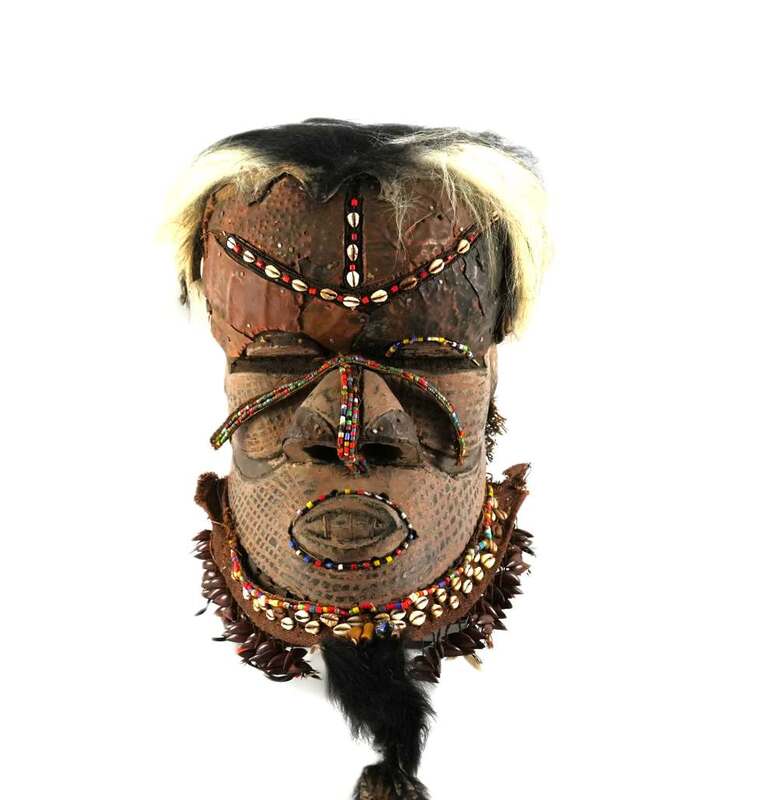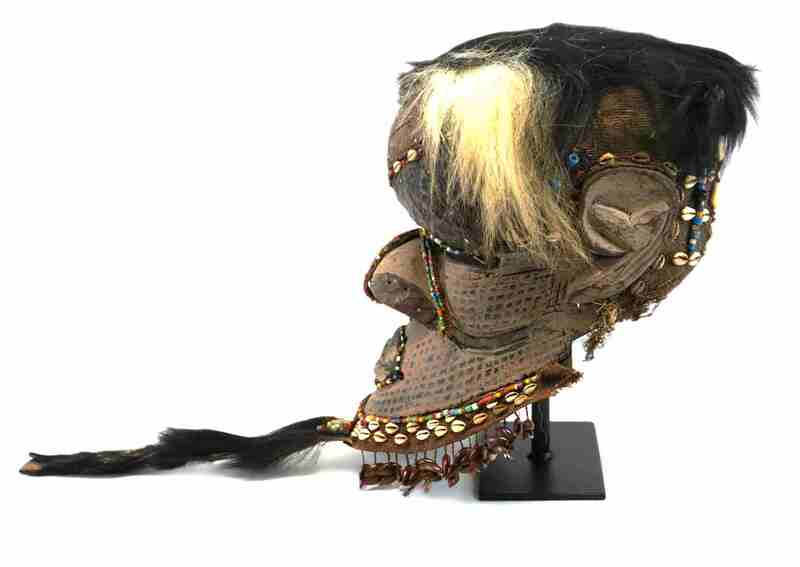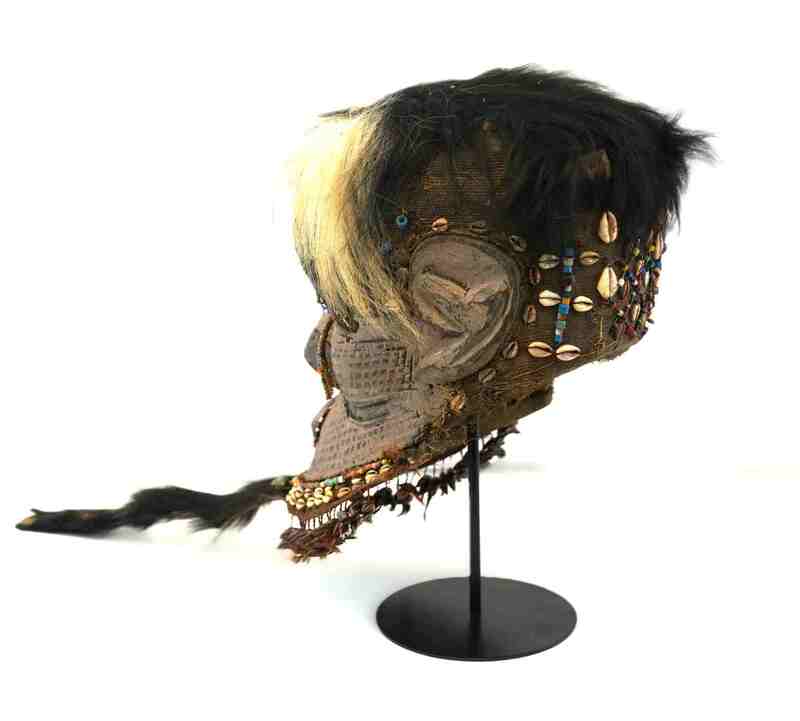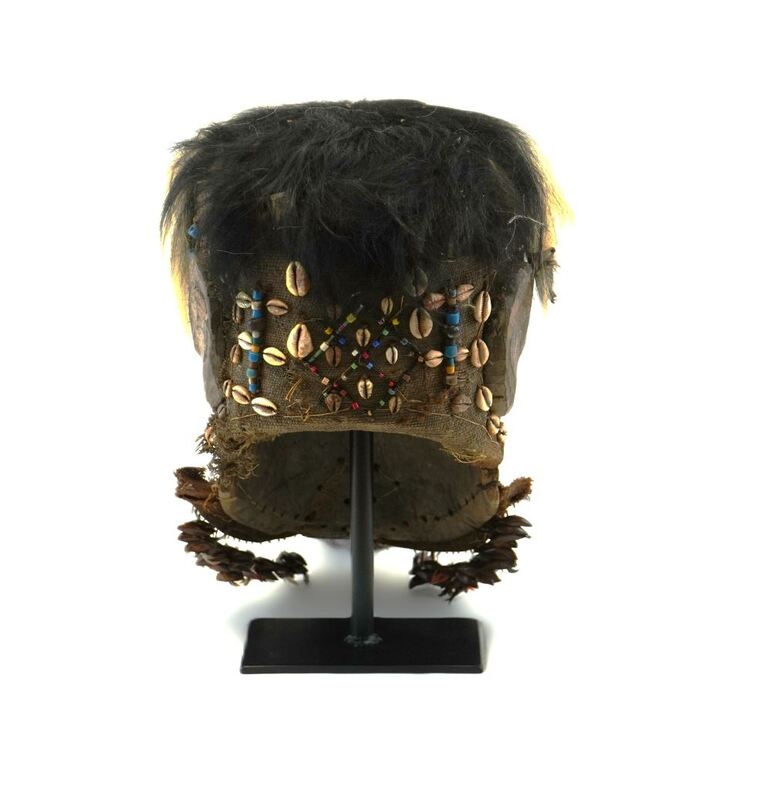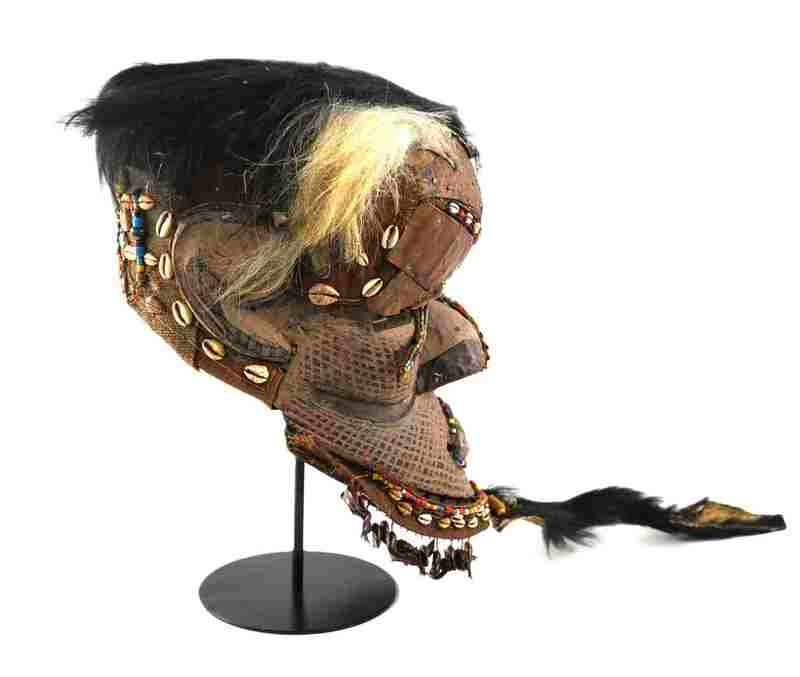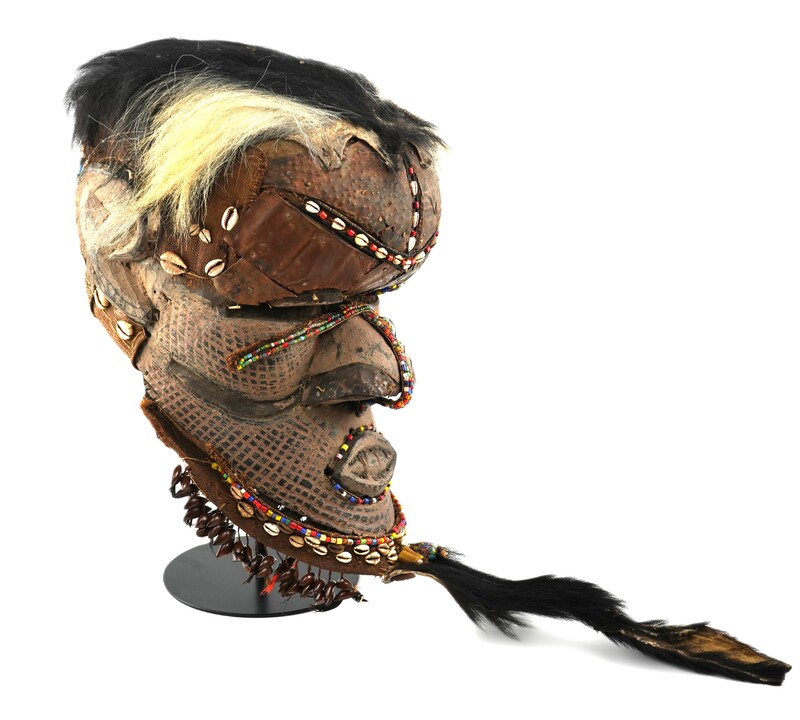-
Object Title
-
Kouba Mask
-
Object ID
-
AR_0011_03_0006
-
Created By
-
Kuba People of Central Africa
-
Date
-
19th Century
-
Owned By
-
Florida A&M University Meek-Eaton Southeastern Regional Black Archives Research Center and Museum
-
Medium
-
Wood, Beads, Cowrie Shells, leather, fur
-
Description
-
Kouba mask, often referred to as a Kuba mask, is a traditional ceremonial mask from the Kuba people of Central Africa, particularly from the Democratic Republic of the Congo. The Kuba are renowned for their artistic craftsmanship, and their masks play a significant role in their cultural and ceremonial practices.
-
Object Notes
-
Kuba masks are diverse in form and function, but they generally share some common characteristics:
Intricate Designs: Kuba masks are known for their elaborate and detailed designs, which often include geometric patterns, beadwork, and carvings. These designs are not just decorative but also carry symbolic meanings related to Kuba mythology, social hierarchy, and cultural identity.
Materials: The masks are typically made from wood and decorated with materials such as cowrie shells, beads, raffia, and pigments. The use of these materials signifies wealth, status, and spiritual significance.
Symbolism: Each mask type represents different aspects of Kuba culture and society. For example, the Moshambwooy mask symbolizes the mythical founding ancestor, while the Bwoom mask represents the common man and social order.
Function and Use: Kuba masks are used in various ceremonies, including initiation rites, funerals, and celebrations. They play a crucial role in masquerades where performers, often dressed in elaborate costumes, dance and enact stories from Kuba mythology and history.
Artistic Expression: The craftsmanship of Kuba masks is highly valued, and each mask is considered a unique piece of art. The masks often reflect the skills and creativity of the individual artists who make them.
-
Special Notes
-
Some notable types of Kuba masks include:
Moshambwooy (or Mwashamboy) Mask: This mask represents Woot, the mythical founding ancestor of the Kuba people. It is often worn during important ceremonies and symbolizes royal power and ancestral lineage.
Bwoom Mask: This mask represents the common man or outsider and is characterized by its pronounced features and use of cowrie shells. It is often used in performances that depict social order and conflicts within the community.
Ngaady a Mwaash Mask: This mask represents the first woman and symbolizes fertility and the continuation of the lineage. It is usually adorned with feminine features and intricate decorations.
Kuba masks are not only significant in their cultural context but are also appreciated globally for their artistic and aesthetic value.
-
Placed Used
-
Democratic Republic of the Congo
-
Collection Title
-
Donald Hill Collection
-
Collection ID
-
AR_0011
-
Classification
-
Bwoom mask is a traditional ceremonial mask used by the Kuba people of Central Africa, specifically from the Democratic Republic of the Congo. The Kuba are known for their intricate and vibrant art, and the bwoom mask is one of the three main royal masks used in their masquerade performances. These masks play a significant role in Kuba rituals and ceremonies, often associated with the initiation of young men, funerals, and other important social events.
The bwoom mask is characterized by its unique design, which includes:
Bulging Forehead: A pronounced, often bulbous forehead that symbolizes strength and power.
Cowrie Shells: The mask is usually adorned with cowrie shells, which are a symbol of wealth and status.
Beads and Raffia: Intricate beadwork and raffia embellishments are common, adding to the mask's detailed and ornate appearance.
Animal Elements: Some bwoom masks incorporate elements that resemble animals, which are believed to provide spiritual protection and connection to the ancestors.
The bwoom mask represents the common man and contrasts with the other royal masks in Kuba culture, which typically symbolize the king (ngaady a mwaash) and the first woman (ngaady a mwaash). Each mask holds specific meanings and is worn by designated members of the community during performances that tell stories of the Kuba people's history, beliefs, and social structure.
-
Credit Line
-
Courtesy of the Meek-Eaton Black Archives/ Louis and Calynne Hill Collection
-
Restrictions and Rights
-
All rights reserved. The use of any part of these objects and photographs transmitted in any form by any means, electronic, mechanical, photocopying, recording, or otherwise, or stored in a retrieval system without the prior written consent of Meek-Eaton Black Archives is an infringement of the copyright law.
-
Spatial Coverage
-
en
In Holdings
